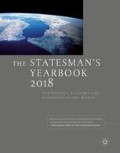You have full access to this open access chapter, Download reference work entry PDF
SAARC was established to accelerate the process of economic and social development in member states. The foreign ministers of the seven member countries met for the first time in New Delhi in Aug. 1983 and adopted the Declaration on South Asian Regional Co-operation whereby an Integrated Programme of Action (IPA) was launched. The charter establishing SAARC was adopted at the first summit meeting in Dhaka in Dec. 1985.
Members. Afghanistan, Bangladesh, Bhutan, India, Maldives, Nepal, Pakistan, Sri Lanka. Observers. Australia, China, EU, Iran, Japan, South Korea, Mauritius, Myanmar, USA.
Objectives. To promote the welfare of the peoples of South Asia; to accelerate economic growth, social progress and cultural development; to promote and strengthen collective self-reliance among members; to promote active collaboration and mutual assistance in the economic, social, cultural, technical and scientific fields; to strengthen co-operation with other developing countries and among themselves. Agreed areas of co-operation under the Integrated Programme of Action (IPA) include agriculture and rural development; human resource development; environment, meteorology and forestry; science and technology; transport and communications; energy; and social development.
A SAARC Preferential Trading Arrangement (SAPTA) designed to reduce trade tariffs between SAARC member states was signed in April 1993, entering into force in Dec. 1995. In 1998 at the Tenth Summit in Colombo, the importance of achieving a South Asian Free Trade Area (SAFTA) as mandated by the Malé Summit in 1997 was reiterated and it was decided to set up a Committee of Experts to work on drafting a comprehensive treaty regime for creating a free trade area. The Colombo Summit agreed that the text of this regulatory framework would be finalized by 2001.
Organization. The highest authority of the Association rests with the heads of state or government, who meet annually at Summit level. The Council of Foreign Ministers, which meets twice a year, formulates policy, reviews progress and decides on new areas of co-operation. The Council is supported by a Standing Committee of Foreign Secretaries, by the Programming Committee and by 11 Technical Committees which are responsible for individual areas of SAARC’s activities. There is a secretariat in Kathmandu, headed by a Secretary-General, who is assisted in his work by seven Directors, appointed by the Secretary-General upon nomination by member states for a period of three years which may in special circumstances be extended.
-
Official language: English.
-
Headquarters: PO Box 4222, Kathmandu, Nepal.
-
Website: http://www.saarc-sec.org
-
Secretary-General: Arjun Bahadur Thapa (Nepal).
Copyright information
© 2018 The Author(s) (if applicable) and The Author(s)
About this entry
Cite this entry
(2018). South Asian Association for Regional Co-operation (SAARC). In: The Statesman’s Yearbook 2018. The Statesman's Yearbook. Palgrave Macmillan, London. https://doi.org/10.1007/978-1-349-70154-4_105
Download citation
DOI: https://doi.org/10.1007/978-1-349-70154-4_105
Published:
Publisher Name: Palgrave Macmillan, London
Print ISBN: 978-1-137-50852-2
Online ISBN: 978-1-349-70154-4
eBook Packages: Political Science and International StudiesReference Module Humanities and Social SciencesReference Module Business, Economics and Social Sciences

